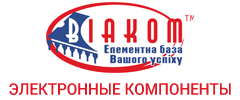Збирач потоків
Navitas’ GaN and SiC devices adopted in Dell’s family of 60–360W AI notebook adapters
MACOM European Semiconductor Center wins multi-year contract for France 2030-funded MAGENTA program
Teledyne HiRel releases wideband 50GHz RF switch for K bands and beyond
⭐ Запрошуємо на День відкритих дверей КПІАбітFest 15 лютого ОНЛАЙН!
Пропонуємо розглянути актуальні й корисні для майбутніх абітурієнтів теми:
A WESTINGHOUSE KX-642 Supervisory Control Protector Tube
 | I cool find on some decommissioned equipment. [link] [comments] |
Converting from average to RMS values

We had a requirement to measure the RMS value of a unipolar square wave being fed to a resistive load. Our resistive loads were light bulb filaments (Numitrons) so the degree of brightness was dependent on the applied RMS.
Our digital multimeters did not have an RMS measurement capability, but they could measure the average value of the waveform at hand.
Conversion of a measured average value to the RMS value was accomplished by taking the average value and dividing that by the square root of the waveform’s duty cycle.
The applicable equations are shown in Figure 1.

Figure 1 Equations used to convert a measured average value to RMS value by taking the average value and dividing that by the square root of the waveform’s duty cycle.
John Dunn is an electronics consultant, and a graduate of The Polytechnic Institute of Brooklyn (BSEE) and of New York University (MSEE).
Related Content
- RMS stands for: Remember, RMS measurements are slippery
- Root mean square versus root sum square
- When do you need true rms?
- Rise Time: The Role of RMS
The post Converting from average to RMS values appeared first on EDN.
Flip ON flop OFF

Toggle, slide, push-pull, push-push, tactile, rotary, etc. The list of available switch styles goes on and on (and off?). Naturally, as mechanical complexity goes up, so (generally) does price. Hence simpler generally translates to cheaper. Figure 1 goes for economy by adding a D-type flip-flop and a few discretes to a minimal SPST momentary pushbutton to implement a classic push-on, push-off switch.
 Figure 1 F1a regeneratively debounces S1 so F1b can flip ON and flop OFF reliably.
Figure 1 F1a regeneratively debounces S1 so F1b can flip ON and flop OFF reliably.
Wow the engineering world with your unique design: Design Ideas Submission Guide
An (almost) universal truth about mechanical switches, unless they’re the (rare) mercury-wetted type, is contact bounce. When actuated, instead of just one circuit closure, you can expect several, usually separated by a millisecond or two. This is the reason for the RC network and other curious connections surrounding the F1a flip/flop.
When S1 is pushed and the circuit closed, a 10 ms charging cycle of C1 begins and continues until the 0/1 switching threshold of pin 4 is reached. When that happens, poor F1a is simultaneously set to 1 and reset to 0. This contradictory combination is a situation no “bistable” logic element should ever (theoretically) have to tolerate. So, does it self-destruct like standard sci-fi plots always paradoxically predict?
Actually, the 4013-datasheet truth table tells us that nothing so dramatic (and unproductive) is to be expected. According to that, when connected this way, F1a simply acts as a non-inverting buffer with pin 2 following the state of pin 4, snapping high when pin 4 rises above its threshold, and popping low when it descends below. Positive feedback through C1 sharpens the transition while ensuring that F1a will ignore the inevitable S1 bounce. Meanwhile the resulting clean transition delivered to F1b’s pin 11 clock pin causes it to reliably toggle, flipping ON if it was OFF and flopping OFF if it was ON where it remains until S1 is next released and then pushed again.
Thus, the promised push-ON/push-OFF functionality is delivered!
The impedance of F1b’s pin 13 is supply-voltage dependent, ranging from 500 Ω at 5 V to 200 Ω at 15 V. If the current demand of the connected load is low enough, then power can be taken directly from F1b pin 13 and the Q1 MOSFET is unnecessary. Otherwise, it is, and a suitably capable transistor should be chosen. For example, the DMP3099L shown has an Ron less than 0.1 Ω and can pass 3 A.
But what about that “no switch at all” thing?
The 4013 input current is typically only 10 pA. Therefore, as illustrated in Figure 2, a simple DC touchplate comprising a small circuit board meander can provide adequate drive and allow S1 to be dispensed with altogether. It’s hard to get much cheaper than that.

Figure 2 An increase in RC network resistances allows substitution for S1 with a simple touchplate.
Stephen Woodward’s relationship with EDN’s DI column goes back quite a long way. Over 100 submissions have been accepted since his first contribution back in 1974.
Related Content
- Setup and Hold Time Basics
- Use an op amp as a set/reset flip-flop
- New VFC uses flip-flops as high speed, precision analog switches
- CMOS flip-flop used “off label” implements precision capacitance sensor
The post Flip ON flop OFF appeared first on EDN.
Build ESD protection using JFETs in op amps

Design engineers aiming to protect the input and output of op amps have several options. They can use an electrostatic discharge (ESD) diode or input current-limiting resistor alongside a transient voltage suppressor (TVS) diode. However, both design approaches have limitations. Here is why an op amp with integrated JFET input protection has better design merits.
Read the full article at EDN’s sister publication, Planet Analog.
Related Content
- Op amps: the 10,000-foot view
- Op-Amp Measurements Explained
- New op amps address new—and old—design challenges
- Are you violating your op amp’s input-common-mode range?
- Op Amp Circuitry Ultra-High-Precision Resistor Usage: Matching and Stability Importance
The post Build ESD protection using JFETs in op amps appeared first on EDN.
Almost the exact split second of a capacitor spark from 2 angles
 | submitted by /u/Exploring-new [link] [comments] |
Процес очищення стічних вод в університеті
Згідно Закону України «Про водовідведення та очищення стічних вод» Національний технічний університет України «Київський політехнічний інститут імені Ігоря Сікорського» під’єднаний до міської централізованої мережі водовідведення (на умові оплати послуг з водовідведення згідно укладеного договору).
SBTi validates onsemi near-term science-based targets for emissions reduction
APC chooses Luminus as worldwide sales channel and go-to-market partner
EEVblog 1665 - Keithley VFD REPAIR 2 - Electric Boogaloo
Штатний розпис на 2025 рік
Investigating injection locking with DSO Bode function
 Peltz oscillator with injection locking
Peltz oscillator with injection locking
Oscillator injection locking is an interesting subject; however, it seems to be a forgotten circuit concept that can be beneficial in some applications.
Wow the engineering world with your unique design: Design Ideas Submission Guide
This design idea shows an application of the built-in Bode capability within many modern low-cost DSOs such as the Siglent SDS814X HD using the Peltz oscillator as a candidate for investigating injection locking [1], [2], [3].
Figure 1 illustrates the instrument setup and device under test (DUT) oscillator schematic with Q1 and Q2 as 2N3904s, L ~ 470 µH, C ~ 10 nF, Rb = 10K, Ri = 100K and Vbias = -1 VDC. This arrangement and component values produce a free running oscillator frequency of ~75.5 kHz
 Figure 1 Mike Wyatt’s notes on producing a Peltz oscillator and injector locking setup where the arrangement and component values produce a free running oscillator frequency of ~75.5 kHz.
Figure 1 Mike Wyatt’s notes on producing a Peltz oscillator and injector locking setup where the arrangement and component values produce a free running oscillator frequency of ~75.5 kHz.
As shown in Figure 2, the analysis from Razavi [2] shows the injection locking range (± Δfo) around the free running oscillator frequency fo. Note the locking range is proportional to the injected current Ii. The component values shown reflect actual measurements from an LCR meter.

Figure 2 Mike Wyatt’s notes on the injection-locked Peltz oscillator showing the injection locking range around the free running oscillator frequency fo.
This analysis predicts a total injecting locking range of 2*Δfo, or 2.7 kHz, which agrees well with the measured response as shown in Figure 3.
Figure 3 The measured response of the circuit shown in Figure 1 showing an injection locking range of roughly 2.7 kHz.
Increasing the injection signal increases the locking range to 3.7 kHz as predicted, and measurement shows 3.6 kHz as shown in the second plot in Figure 4.
Figure 4 The measured response of the circuit shown in Figure 1 where increasing the injection signal increases the locking range to 3.7 kHz.
Note the measured results show a phase reversal as compared to the illustration notes (Figure 2) and the Razavi [2] article. This was due to the author not defining the initial phase setup (180o reversed) in agreement with the article and completing the measurements before realizing such!!
Injection locking use caseInjection locking is an interesting subject with some uses even in today’s modern circuitry. For example, I recall an inexpensive arbitrary waveform generator (AWG) which had a relatively large frequency error due to the cheap internal crystal oscillator utilized and wanted the ability to use a 10 MHz GPS-disciplined signal source to improve the AWG waveform frequency accuracy. Instead of having to reconfigure the internal oscillator and butcher up the PCB, a simple series RC from a repurposed rear AWG BNC connector to the right circuit location solved the problem without a single cut to the PCB! The AWG would operate normally with the internal crystal oscillator reference unless an external reference signal was applied, then the oscillator would injection lock to the external reference. This was automatic without need for a switch or setting a firmware parameter, simple “old school” technique solving a present-day problem!
Michael A Wyatt is a life member with IEEE and has continued to enjoy electronics ever since his childhood. Mike has a long career spanning Honeywell, Northrop Grumman, Insyte/ITT/Exelis/Harris, ViaSat and retiring (semi) with Wyatt Labs. During his career he accumulated 32 US Patents and in the past published a few EDN Articles including Best Idea of the Year in 1989.
References
- “EEVblog Electronics Community Forum.” Injection Locked Peltz Oscillator with Bode Analysis, www.eevblog.com/forum/projects/injection-locked-peltz-oscillator-with-bode-analysis.
- B. Razavi, “A study of injection locking and pulling in oscillators,” in IEEE Journal of Solid-State Circuits, vol. 39, no. 9, pp. 1415-1424, Sept. 2004, doi: 10.1109/JSSC.2004.831608.
- Wyatt, Mike. “Simple 5-Component Oscillator Works below 0.8V.” EDN, 3 Feb. 2025, www.edn.com/simple-5-component-oscillator-works-below-0-8v/.
Related Content
- Simple 5-component oscillator works below 0.8V
- Injection-lock a Wien-bridge oscillator
- Ultra-low distortion oscillator, part 2: the real deal
- The Colpitts oscillator
- Clapp versus Colpitts
The post Investigating injection locking with DSO Bode function appeared first on EDN.
AlixLabs collaborates with Linköping University
Cree LED launches XLamp XP-L Photo Red S Line LEDs
Lumentum appoints Michael Hurlston as president & CEO as Alan Lowe retires
Хакатон Smart House System
31 січня в крутій КПІшній лабораторії електроніки Lampa відбувся хакатон Smart House System, який організували факультет електроніки КПІ ім. Ігоря Сікорського та топ-компанії із розробки цифрових продуктів GlobalLogic Ukraine.
Top 10 3D Printing Companies in India
India’s 3D printing industry has witnessed significant growth, driven by advancements in additive manufacturing technologies and a surge in demand across various sectors. Here are ten leading 3D printing companies in India, each contributing uniquely to the nation’s technological landscape:
- Imaginarium
Based in Mumbai, Imaginarium stands as India’s largest 3D printing and rapid prototyping company. Serving industries such as jewellery, automotive, and healthcare, they offer a comprehensive suite of services, including design validation, prototyping, and batch production. Their state-of-the-art infrastructure and technical expertise make them a preferred partner for businesses seeking innovative solutions.
- Divide By Zero Technologies
Headquartered in Maharashtra, Divide By Zero Technologies is a prominent 3D printer manufacturer catering to small and medium enterprises. Their patented Advanced Fusion Plastic Modeling (AFPM) technology ensures high precision and reliability. Notable products include the Accucraft i250+ and Aion 500 MK2, which are utilized by industry giants like Samsung and Mahindra.
- Altem Technologies
Operating from Bangalore, Altem Technologies provides cutting-edge 3D printing solutions using Dassault Systems’ 3D Experience Platform. Their offerings, such as ENOVIA, CATIA, and DELMIA, cater to diverse sectors including aerospace, defense, and medical. Recognized for innovation, they received the Frost & Sullivan 2017 Award for advancements in 3D printing.
- think3D
Founded by BITS graduates, think3D is headquartered in Singapore with a significant presence in India. They offer a wide range of 3D printers, scanners, and filaments, serving clients like Microsoft, Shell, and the Indian Navy. Their customized training programs, especially for schools under the Atal Innovation Mission, highlight their commitment to education and innovation.
- Novabeans
Established in 2014, Novabeans operates offices in Gurgaon, Delhi, and Paris. As authorized resellers of brands like Ultimaker and LeapFrog, they provide a range of 3D printing solutions. Their 3D Printing for Education Program underscores their dedication to integrating additive manufacturing into academic curricula.
- JGroup Robotics
Specializing in Fused Deposition Modeling (FDM) technology, JGroup Robotics offers 3D printers, on-demand services, and printing materials. Their printers utilize thermoplastic filaments to create precise three-dimensional objects, catering to various industrial applications.
- 3Ding
With branches in Chennai, Bangalore, Hyderabad, and Mumbai, 3Ding is one of India’s oldest 3D printing suppliers. They offer a diverse range of 3D printers, scanners, and printing materials from leading brands. Their services include 3D design, printing, and scanning, along with workshops and training programs to promote additive manufacturing.
- Boson Machines
Based in Maharashtra, Boson Machines is a leading 3D printing manufacturer utilizing technologies like FDM, SLA, and SLS. They offer services such as part production, injection molding, and CNC machining, providing comprehensive solutions from design to production.
- 3D Print World
Operating under the leadership of Ankit Murarka, Aman Kedia, and founder Alok Goenka, 3D Print World offers top-tier 3D printing services and supplies printers and raw materials across India. Their commitment to delivering quality outputs promptly has established them as a trusted partner in the additive manufacturing sector.
- Accreate Additive Labs
Co-founded by Ravi Shankar and Ravi Seshadri, Accreate Additive Labs provides design innovation in 3D printing by combining functional expertise with technological prowess. They focus on creating globally relevant intellectual property through their advanced additive manufacturing solutions.
The post Top 10 3D Printing Companies in India appeared first on ELE Times.








